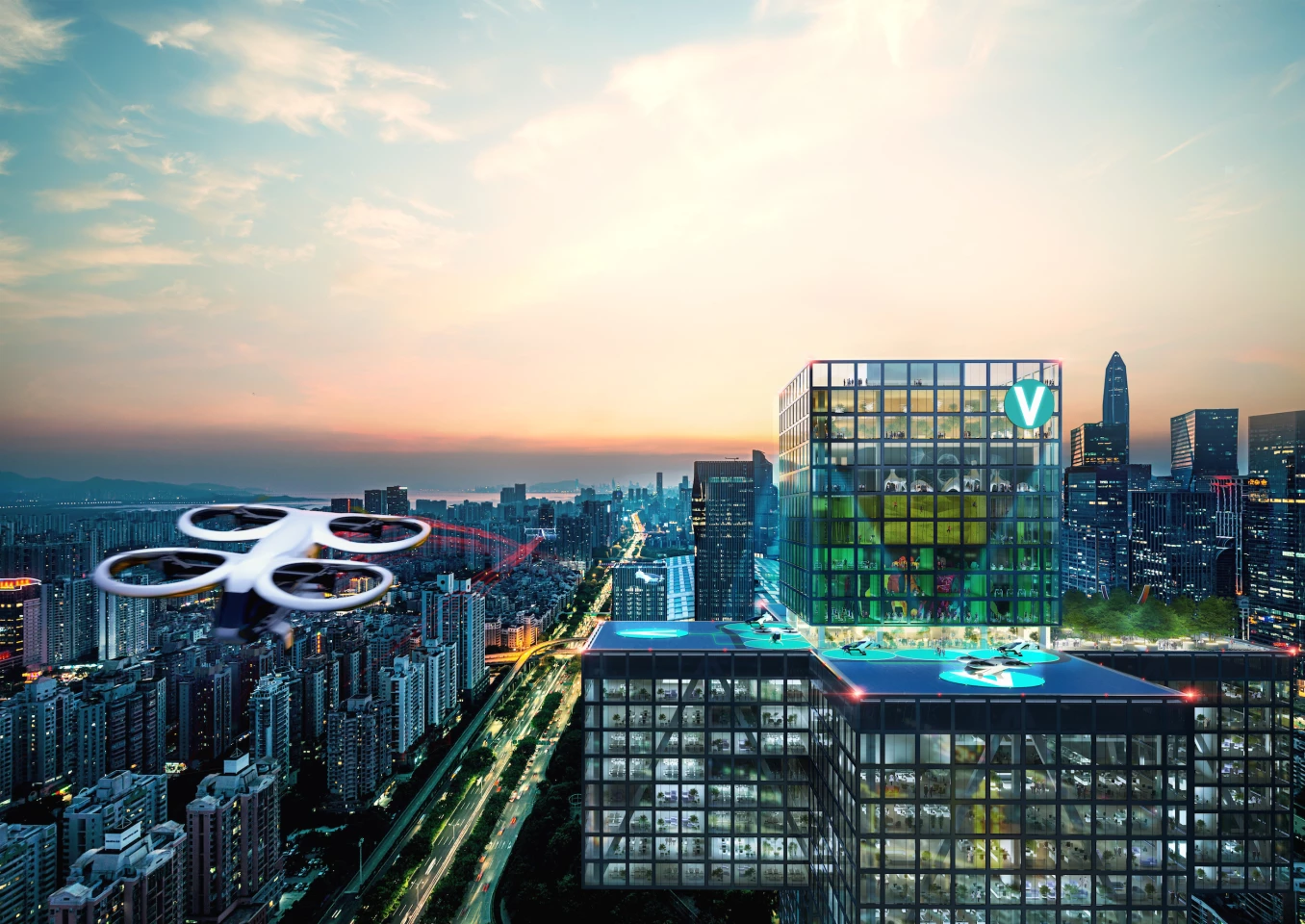If flying cars and other similar vehicles become commonplace, our cities will surely need to adapt – but will New York City resemble The Jetsons, or look much like it does now, just with a few extra airports? A study led by MVRDV and Airbus has some interesting ideas.
MVRDV spent two years collaborating with Airbus, alongside Bauhaus Luftfahrt, ETH Zurich, and Systra, to explore how to best integrate flying vehicles into existing cities. Its vision is centered around vertiports, which would come in various styles and sizes. The vertiports would double as public amenities and could produce renewable energy, with solar panel arrays for example.
"The research findings envisaged vertiports of various types and sizes, just like traditional transport stops, stations, and terminals," says MVRDV. "However, unlike stations for other urban transport options such as trains, metros, or buses, the network does not require any linear infrastructure in between. No tracks, tunnels or roads are required, saving energy, natural resources, and land. This allows designers to adapt the vertiports to a variety of different locations, plugging into and enhancing existing urban scenarios with a number of different configurations."

The idea is that eventually the vertiports would complement existing methods of transport like rail and road, and MVRDV's renders depict different examples of them being integrated into cities. These include a greenery-covered version in São Paulo, Brazil, and another installed off the coast of San Francisco. One particularly wild idea envisions people using a drone-like vehicle to move from skyscraper to skyscraper in Shenzhen, China, without needing to touch the ground.

That said, we're a while away from these kind of ideas being implemented, so don't expect to be hailing a sky taxi quite yet.
"As cities become denser and technologies improve, it becomes increasingly clear that the truly three-dimensional city – one that includes flying vehicles – is surely one of the city models of the future… a city where my mobility is at my balcony!" says Winy Maas, founding partner of MVRDV. "But to reach this future will require many small steps. It's a credit to Airbus that they are thinking about these issues in advance, and doing so in a way that will improve things in the meantime."
Source: MVRDV













